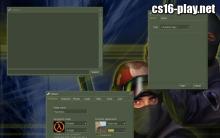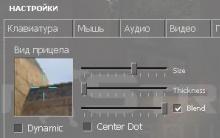Preparing to play - settings
- Any parameters and settings can be changed at any time, even during the game.
- Initially, the game is set up like this:
- Calculation type - Add up to 10
- Prize 1- chocolate bar, prize 2- cookies
- In a game session 10 calculations (arithmetic examples)
- Percentage of examples that need to be solved correctly to receive the Prize 1 - 90%
- Percentage of examples that need to be solved correctly in order to receive the Prize 2 - 70%
- You can choose any other type of calculation, depending on what the child knows and what is going on in school at the moment. Types of calculations in the game:
- Addition, subtraction, addition, and subtraction (mixed):
- To 10
- Up to 20 (with the transition through the top ten)
- Up to 20 (with a transition through the top ten and without)
- Up to 30
- Up to 100
- Multiplication, division or any combination -by 1, -by 2, -by 3 ....... etc. up to 10
- Comparing numbers
- Addition, subtraction, addition, and subtraction (mixed):
- Set how many examples will be in the game session. It is better to start with a small number of attempts - 5 or 10, so as not to discourage the child from continuing to play. When the child increases milk yield :) improves performance, you can move on to a serious game with 100-200 examples.
- Enter the percentage of correctly solved examples for which 1 and 2 prizes are awarded. For a start, it's better to lower the percentage. For example, select 70 and 50 percent for 1 and 2 premiums, respectively. Later, the rates can be increased to 90 - 70. Or even up to 98% - 95% for very very smart children :). Please enter only numbers, no% sign!
- Write down the prizes the child will receive for 1st and 2nd place.
- The settings will be saved using a cookie (a small script) and restored the next time you open the game page in your browser.
Now you can start the game!
- To start the game, press the START button
- When the example appears on the screen, the child must enter the answer after the "=" sign
- If we play "comparisons", you need to enter the appropriate sign:. To do this, it is most convenient to use the buttons that appear next to the NEXT button
- After the result is entered, you need to click on the OK button (or ENTER on the keyboard) to check if the example was solved correctly.
- If the example was solved correctly, "Correct" appears on the screen. If not, "Wrong" is the correct answer. At the same time, the game will calculate the percentage of correctly solved examples.
- Press the NEXT button to go to the next example.
- When the session is over, the screen will display the prize that the child won (or "won nothing") and the percentage of examples solved correctly during the session
- To start a new session, click the START OVER button.
Great expectations:)
What can you expect from this game? Great help in passing the school program! As a rule, in 5-7 days, during which the child plays for 30-40 minutes, he firmly learns the next type of calculations (for example, adding up to 20 with a transition through ten). And he practically stops making mistakes in the classroom.
The very first examples that a child gets acquainted with even before school are addition and subtraction. It is not so difficult to count the animals in the picture and, crossing out the extra ones, count the remaining ones. Or shift the counting sticks and then count them. But it is a little more difficult for a child to operate with bare numbers. That is why practice and more practice is needed. Do not quit studying with your child in the summer, because over the summer, the school curriculum from a small head simply wears off and it takes a long time to make up for lost knowledge.
If your child is a first grader or is just going to first grade, start by repeating the composition of the number in houses. And now you can take on examples. In fact, addition and subtraction within ten is the first practical application by a child of knowing the composition of a number.
Click on the pictures and open the simulator at maximum magnification, then you can download the image to your computer and print it in good quality.
There is an opportunity to cut A4 in half and get 2 sheets with tasks if you want to reduce the load on the child, or let them decide one column a day if you decide to work out in the summer.
We solve the column, celebrate the successes: a cloud - not very well decided, a smiley - good, the sun - great!
Addition and subtraction within 10

Now scatter!


And with gaps (windows):

Examples for addition and subtraction within 20
By the time a child begins to study this topic of mathematics, he should know very well, by the tooth, the composition of the first ten numbers. If the child has not mastered the composition of numbers, it will be difficult for him in further calculations. Therefore, constantly return to the topic of the composition of numbers within 10, until the first grader masters it to automatism. Also, a first grader should know what the decimal (bit) composition of numbers means. In mathematics lessons, the teacher says that 10 is, in other words, 1 dozen, so the number 12 consists of 1 dozen and 2 units. When you add, the ones are added to the ones. It is on the knowledge of the decimal composition of numbers that the methods of addition and subtraction within 20 are based without going through a dozen.
Examples for printing without going through a dozen mixed up:

Addition and subtraction within 20 with the transition through a dozen are based on the techniques of adding up to 10 or subtracting up to 10, respectively, that is, on the topic "composition of the number 10", so take a responsible approach to studying this topic with your child.
Examples with a transition through a dozen (half of the sheet is addition, half is subtraction, the sheet can also be printed in A4 format and cut in half into 2 tasks):



In this lesson, you will learn how to add and subtract single digits through the digit. Solving interesting tasks, you will learn the algorithm for adding and subtracting numbers with the transition through ten and get acquainted with the table for adding single-digit numbers up to 20. You will have the opportunity to practice the previously studied material with interesting examples.
Topic:Familiarity with basic concepts in mathematics
Lesson: Addition and subtraction of single-digit numbers with a transition through the digit. Addition table up to 20
The graphical model can explain addition of single-digit numbers with a transition through ten.
How can 9 and 7 be folded?(fig. 1)
Rice. one
The graphical model shows that the first term 9 must be supplemented to 10. To do this, we divide the second term into two parts, one of which is equal to the number 1, since
9 + 1 = 10, which means 7 = 1 + 6. (Fig. 2)

Rice. 2
Let's do the addition in parts:
9 + 7 = (9 + 1) + 6 = 10 + 6 = 16
Answer: 9 + 7 = 16.
You can add these numbers in a different way. (fig. 3)

Rice. 3
The second term 7 can be supplemented to 10. For this, the first term is divided into two parts, one of which is equal to 3. Therefore, 9 = 3 + 6.

Rice. 4
Let's do the addition in parts:
7 + 9 = (7 + 3) + 6 = 10 + 6 = 16
The first term is 9, it lacks up to 10 of one unit, so we break the second term into parts. 5 is 1 and 4. Add to 9 first one unit, and then the remaining four units.
9 + 5 = 9 + (1 + 4) = 14
The first term is 6, it lacks up to 10 four units, so we divide the second term into parts: 4 and 2. Add 4 to 6 first and get ten units, and then the remaining two units.
6 + 6 = 6 + (4 + 2) = 12
The first term is 4, it lacks up to 10 six, so the second term 8 is divided into parts: 6 and 2. First, add six units to 4 and get ten units, and then the remaining two units.
4 + 8 = 4 + (6 + 2) = 12
In the reduced 15 - five units, so we divide the subtracted 7 into parts: 5 and 2. Subtract five units from 15 first, we get 10. Then subtract the remaining two units from ten.
15 - 7 = 15 - (5 + 2) = 8
In the reduced 16 - six units, so we divide the subtracted 9 into parts: 6 and 3. First subtract six units from 16, we get 10. And then subtract the remaining three units from 10.
16 - 9 = 16 - (6 + 3) = 7
In the reduced 12 - two units, so we divide the subtracted 4 into parts: 2 and 2. From 12 we subtract 2, we get 10. And from 10 we subtract 2.
12 - 4 = 12 - (2 + 2) = 8
Answer: 12 - 4 = 8.
It is not always convenient to use the technique of addition and subtraction in parts with a transition through a dozen, so you need to learn single-digit addition table up to 20 by heart.
The figure shows a table with the help of which it will be easier for you to learn the cases of adding single-digit numbers up to 20. (Fig. 7) 
Rice. 7
In each column, the first term is the same, and the second one increases by one, which means the sum will also increase by one. Let's find the value of these sums.
9 + 2 = 11, therefore: 9 + 3 = 12, reasoning like this, we fill in the entire table. (fig. 8)

Rice. eight
Each line contains the sums with the same answers. Choose the way how it will be easier for you to remember the answers: by columns or by rows. If you learn well the table of addition of single-digit numbers up to 20, then it will not be difficult for you to perform subtraction of single-digit numbers within 20.
Bibliography
- Alexandrova L.A., Mordkovich A.G. Grade 1 mathematics. - M: Mnemosina, 2012.
- Bashmakov M.I., Nefedova M.G. Mathematics. 1 class. - M: Astrel, 2012.
- Bedenko M.V. Mathematics. 1 class. - M7: Russian Word, 2012.
- Social network of educators ().
- 5klass.net ().
- Self-taught ().
Homework
1. Remember how to correctly add and subtract single-digit numbers with a transition through the digit.
2. Help the frog solve examples.

3. Solve the examples and color the drawing.

I already wrote about ours. But we seem to be growing out of it. In any case, Dima can count freely from 1 to 100 and back. I understand that his need for mathematical knowledge grows with him. So I decided to delve deeper into the study of mathematics according to the Zaitsev system.
Table 100 has been familiar to me for a long time, even my older children had such a table. But Zaitsev still has so many interesting developments. BUT alone, most of them need a lot of space. And we have a sorely lack of it in our apartments.
At the dacha we finally made a room for ourselves. And, lo and behold, we have a large and not yet occupied wall! I immediately decided that I would hang on her. I bring to your attention our mathematical corner in the country:
Addition and subtraction table within 20.
Numerical tape from 0 to 100.

True, according to the method, it should hang in one line, but we certainly don't have such a long wall! My tables are slightly different from the Zaitsevskys, but their essence is the same. In the number tape, I wanted to play with colors a little. And to make a colored background behind the numbers - for me, for example, it is not very economical when printing. In my opinion, it is enough that the numbers themselves are colored. And to the table of addition and subtraction within 20 I added the number of basic numbers - so it seems clearer to me.
Tasks on tables can be read on Zaitsev's website, where you can order original manuals. I offer what I made for my son. The documents will be in PDF format and must be printed on thick paper.

Addition and subtraction table up to 20 x 5 sheets, in which you need to cut off the margins and glue the sheets together. I used regular tape and glued it on the back.
Numerical tape on 22 sheets. The first two dozen fit on one sheet. They only need to be cut lengthwise and glued between 4 and 5, 14 and 15. From 20 to 59, everything is also clear. But the next tens did not fit on one sheet in width, so you have to work a little and figure out when gluing. Hope you can handle it.

Dima was very impressed with the new tables! He immediately noticed that on one table the numbers were black and orange, and on the other - green. He really enjoyed traveling the number tape in search of the numbers that I call.
Addition and subtraction tables are used to teach children to count or to test their skills in addition and subtraction. Different tables are used for these two tasks. Both versions of the tables can be downloaded and printed on this page
Addition table up to 20 print and download
The addition table is used for teaching children. The vertical leftmost column and the horizontal top row are terms. In order to add two numbers, you need to find them in a vertical column and in a horizontal row. The intersection is the sum of these two terms. For example, as shown in the picture below, 6 + 5 = 11.
You can print the addition table up to 20 in Word or PDF format. If you need a table for adding up to 10, you can easily make it by deleting unnecessary cells in Word format. If you need an addition table greater than up to 20, then you can download an addition table in Excel format and add the required columns and rows by copying.
 |
|
 |
|
 |
Subtraction table up to 20 print and download
The same addition table that can be printed above is used as the subtraction table. Suppose we need to solve example 14 - 8 = 6. Using the subtraction table, we find in the table field the diagonal with the decreasing 14. In the figure below, this diagonal is highlighted in light green. Choose the number 14 on this diagonal, which is opposite the subtracted 8. The resulting number 6 in the top row is the answer.

As you can see, the same addition and subtraction table is used for addition and subtraction, which you can print or download from the links above in different formats.
Subtraction table without answers print and download

 |











The command to reduce the sight in cs 1
Online store of unique things All patches for cs 1 6
Cs starts up. CS: GO launch options. Launch options for cs go pro players
Civil defense Role-playing game rules, basic concepts
Crossfire models for ks 1